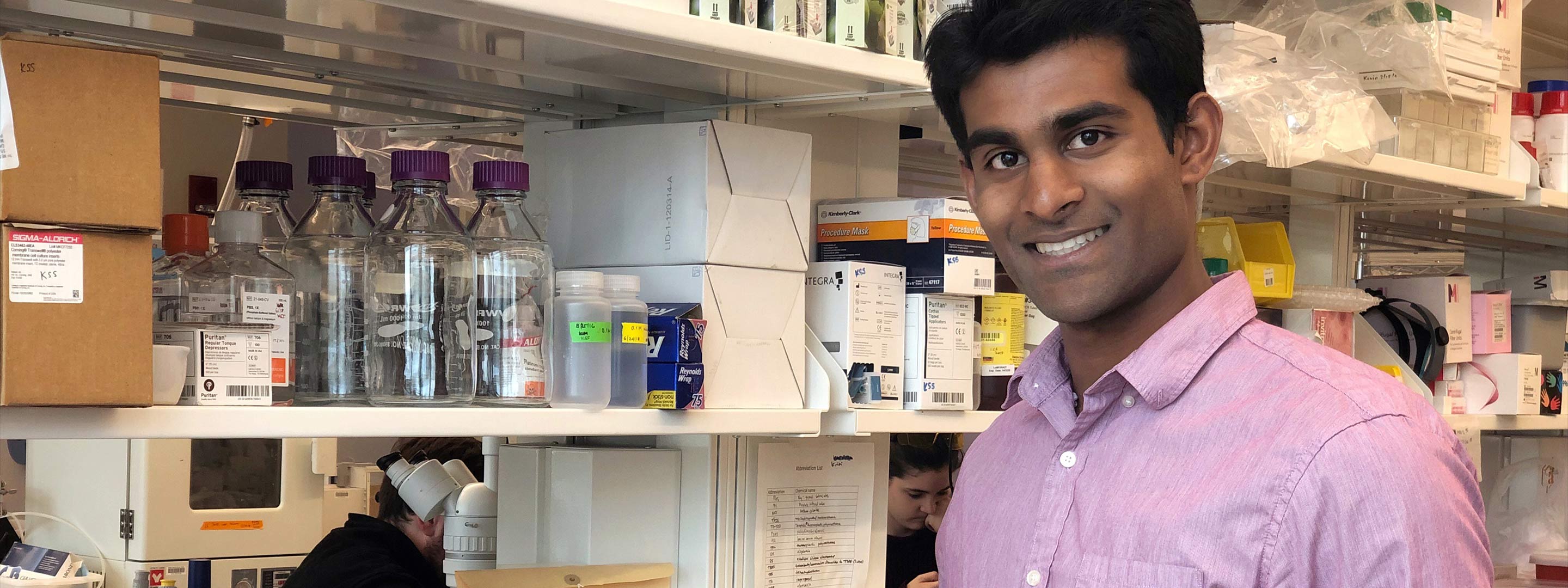A Portable Sensor for Diagnosing Dehydration

For many patients, including the elderly and those with chronic organ failure, managing precise and proper hydration is critical. Yet, there has been no reliable, easy way to measure hydration levels in the approximately 500,000 patients in the United States.
Now, researchers from the Massachusetts Institute of Technology (MIT) and Massachusetts General Hospital have miniaturized the technology behind magnetic resonance imaging (MRI) scans to create a device for quickly and accurately measuring hydration. In animal studies, the device correctly monitored fluid loss due to dehydration.
The device will require further clinical studies, but the team behind it has high hopes that it could mean a cheap, portable, and accurate way of measuring hydration across a range of populations including dialysis patients, athletes, soldiers, and the elderly.
It could also mean providing a single standard for measuring hydration, which today includes cumbersome methods like blood testing and sometimes subjective guesswork that comes with pinching the skin.
Hertz Fellow Ashvin Bashyam, who recently earned his PhD in electrical engineering and computer science at MIT, is a member of the team behind the technology. He is now at 5AM Ventures, a venture capital firm focused on life sciences. Bashyam is lead author on a paper describing the design of the device published this year, and his teammates published a paper this year describing the animal study. To learn more about the technology, we sat down with Bashyam to discuss how the team created the device and what it takes to turn engineering know-how into medical advances.

Hertz Foundation: As an engineer, how did you become interested in improving health care treatment?
During my PhD, I wanted to direct my research towards unmet clinical needs and, early in my fellowship, I decided specifically that I wanted to address chronic diseases—which represent some 75% of US healthcare spending, and 90% of spending on Medicare and Medicaid—and that the diagnostic tools with the most potential impact are non-invasive. Magnetic resonance is non-invasive, but usually involves a large, bulky MRI machine. When I joined Michael Cima’s lab, I was well positioned to miniaturize the technology and make it more useful.
Hertz Foundation: How did your team at MIT decide that dehydration was the diagnostic problem you wanted to address?
My colleagues and I started talking with physicians about diagnostic challenges, and one thing we heard over and over again was measuring hydration state. It’s very common for patients to be discharged from the hospital after a surgery, only to be readmitted because of dehydration. And elderly people admitted to the hospital are often diagnosed with dehydration, so an easy, cheap method of measuring someone’s hydration status could have real clinical benefits.
Current tests for dehydration require invasive, time-consuming procedures like drawing blood or analyzing urine, and measuring other bodily fluids like tears, water, and sweat can be misleading. We felt there was opportunity to improve how we measure fluid volume status, and magnetic resonance provided the best technology to get there, especially if we could make it portable and lower the cost.
Hertz Foundation: When you learned about the problem of dehydration, were you thinking of MRIs?
For me, it was more about finding the best technology for the problem we were trying to solve. Once we decided to make a non-invasive tool, we were pretty much limited to either sound or electromagnetic waves. MRI was interesting to me because, with careful manipulation, we can pull out a rich set of information, telling us both what type of molecules we’re sensing along with their chemical environment. This means it can detect not only anatomical features—fractures, joint injuries, or fat content—but also dynamic changes inside your body, like direction of flow in a blood vessel or the distribution of fluids within tissue.
Hertz Foundation: What makes it possible to use this technology to create a portable device?
The applications of MRI have been limited because the machines in hospitals are large, expensive, and require trained operators. In our case, though, we are leveraging the underlying technology of magnetic resonance without performing imaging, which is the main reason MRI machines are so large. The result is a lower-cost, portable magnetic resonance sensor. This new approach opens up many new applications for magnetic resonance within medical diagnostics
Hertz Foundation: How did you settle on measuring the muscle?
Muscle tissue is very sensitive fluid volume status, including dehydration: as the amount of fluid in your body changes, the muscle is one of the first tissues to expand or contract in response to these changes. Most of this change is the outside of the cells. The amount of water within the cells remains relatively stable.
Magnetic resonance is especially sensitive to both the presence of water and its local microenvironment. We invented a technique to use our portable magnetic resonance and distinguish between the signal originating from water within cells versus water outside of cells. Since extracellular water is lost more rapidly than intracellular water during dehydration, measuring the relative amounts of water between these two compartments can be used to estimate the amount of fluid loss.
The decision to measure muscle tissue was actually a serendipitous finding. We learned that the muscle tissue was most responsive to changes in fluid volume status by performing whole body scans with magnetic resonance. We consistently saw that the muscle tissue would change much more than many of the other tissues.
Hertz Foundation: What do you see as the remaining challenges for developing this technology?
There are a few engineering challenges we still need to overcome to make this tool as accurate as possible and then prove its utility in the clinic. One of the main challenges is showing that we can perform a measurement deep into the tissue so that we can be confident that we’re reaching the muscle. We’ve recently developed new approaches to do this and will hopefully be publishing these next year. We then need to test the technology on humans more extensively to understand what natural variation in hydration status looks like and how our device performs in representative patient populations. For this, we will be partnering with physicians at Massachusetts General Hospital to run clinical studies on healthy volunteers and patients.
Hertz Foundation: What are some of the lessons you have learned for advancing medical diagnostics?
I learned how important it is to work hard to find a problem worth solving and truly understand what makes it challenging. We started by understanding what medical professionals are facing daily when facing fluid imbalances in patients. As we started to grasp the diagnostic challenge, we could then think carefully about what information would be most useful to a clinician.
Another key insight was the ability for a localized measurement to give us a window into a physiological change occurring throughout the body. Dehydration affects the total amount of water across the entire body. The intuitive way to measure it might be to try to account for all of that water, but to do this with magnetic resonance would require a bulky, expensive, full-body scan, which would be impractical. Instead, we found that a local property—the ratio of intracellular to extracellular water within the skeletal muscle tissue—was enough to help identify fluid imbalances across the entire body.
Hertz Foundation: You graduated earlier this year. How are you taking what you’ve learned from this project into the next chapter of your life?
I recently joined the venture capital firm 5AM Ventures, where I’m focusing on launching companies developing novel therapeutics. Similarly to my PhD work, we try to make sure to think about the medical problem we’re tackling first before beginning development of new technologies. I really enjoy the early stages of these projects where we’re trying to understand where the main challenges are and then coming up with the strategies to overcome them.